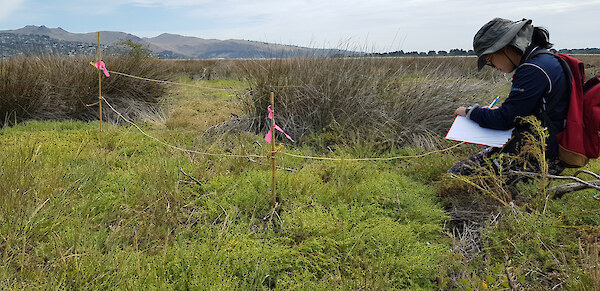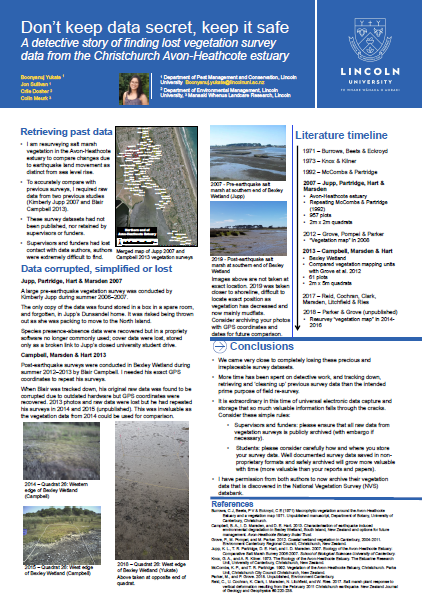2019 CRT Scholarship recipient determined to overcome challenges
 Boonyanuj (TK) Yukate is the recipient of this year’s CRT Scholarship and already presented a short overview of her planned studies at our conference in Warkworth. Here is an update of her research in her own words:
Boonyanuj (TK) Yukate is the recipient of this year’s CRT Scholarship and already presented a short overview of her planned studies at our conference in Warkworth. Here is an update of her research in her own words:
I want to begin by thanking the Coastal Restoration Trust for awarding me the postgraduate study award for 2019. I enjoyed meeting the trustees at the 2019 conference in Warkworth and wish to thank you all for being so friendly and welcoming.
Many of you will have already heard about my study during my presentation at the conference but to quickly recap, my Master’s research at Lincoln University is focused on increasing the understanding of how coastal wetlands, particularly salt marshes, are responding to the impact of sea level rise. There is extensive research on the Avon-Heathcote Estuary dating as far back as 1971, but I want to accumulate and compare the more “recent” pre- and post-earthquake studies. I tried to repeat past vegetation survey, particularly in the northern area of the estuary due to the subsidence occurring after the earthquake, which mimics sudden sea level rise. In order to compare and differentiate the changes between earthquake land movements being distinct to sea level rise, I needed to be able to find previous survey sites from two specific authors accurately. Surprisingly, on my quest in searching for these datasets, I ended down a rabbit hole. The survey datasets had not been published, nor retained by supervisors and funders, and any contact details lost. This detective work will now be documented in a chapter of my research regarding the need for data sharing in ecology. If this ecology research pathway does not work out, my supervisor says I have a promising career as a private detective.
On to my research. Casually observing the area it is evident that there has been a significant change to the vegetation post-earthquake. So far from my fieldwork, I have been noticing a decrease of salt marsh vegetation in areas that have experienced subsidence (or sudden ‘sea level rise’). However, I cannot just attribute this only to the subsidence and must try to understand the hydrology, salinity and various other factors influencing the community. I also want to try and understand whether salt marsh vegetation would be able to retreat landwards naturally without assistance. My focus site is in the Bexley red zone. I have completed transects with plot surveys in the area to try and see if I would be able to capture any salt marsh vegetation. I have completed all my fieldwork, and I am currently analysing my results.
Click on sheet to enlarge it
Posted: 4 June 2019 in the News category

